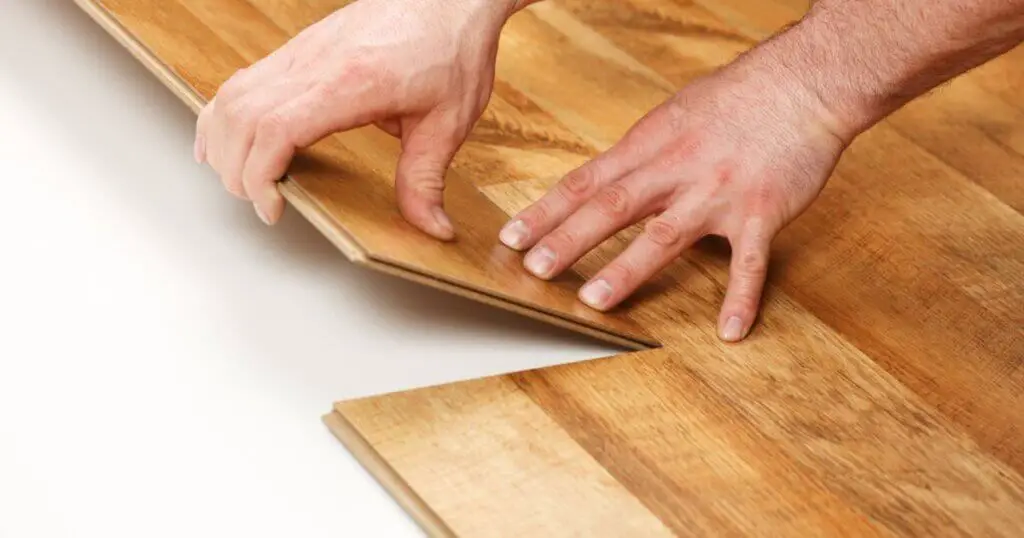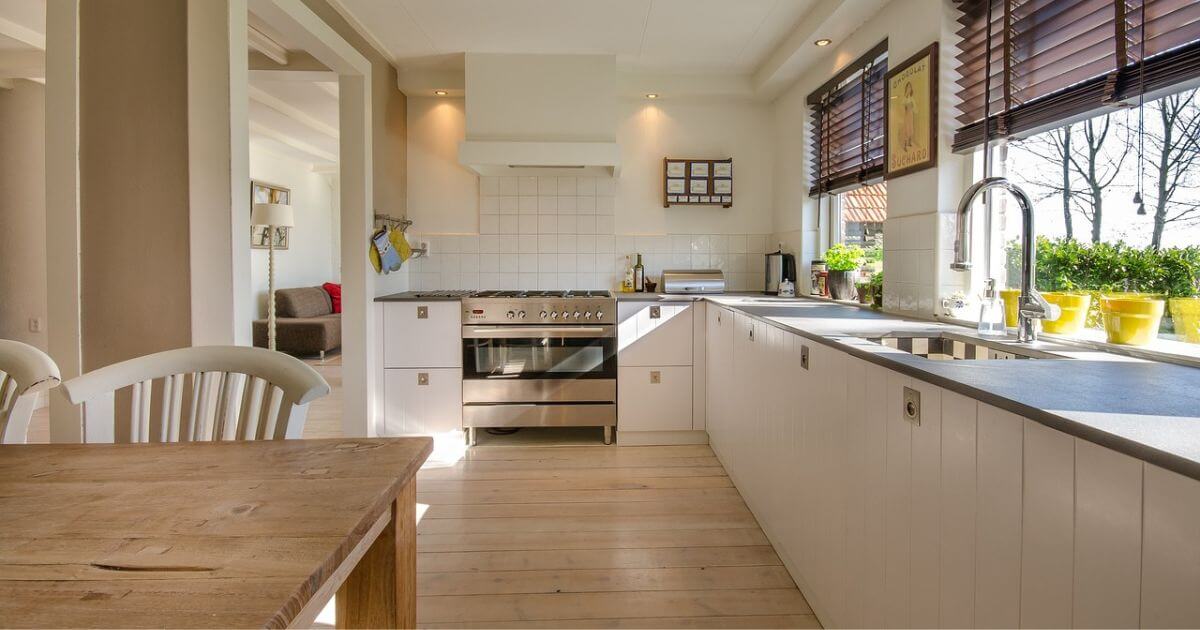When choosing a kitchen or bathroom flooring material, the biggest concern is whether the material is waterproof or water-resistant. So that it does not swell or discolor like normal plywood when exposed to moisture or water for a long time
Vinyl is a popular material for kitchen flooring or any other moisture place. It is waterproof, durable and affordable material. In this article, we’ll explain the advantages and disadvantages of using vinyl flooring, especially when it comes to using it in your kitchen. Which will help you to make the right decision.
What is Vinyl Flooring?
Vinyl flooring is a synthetic material made up of multiple layers. The texture of the top surface looks very similar to hardwood, tiles and stone. It is a popular and affordable flooring option known for its durability, water resistance and ease of cleaning and maintenance.
The base material for making vinyl flooring is polyvinyl chloride (PVC) and consists of a combination of many components: plasticizer, trace stabilizer, pigment, backing and a carrier sheet.
The Advantages of Vinyl Flooring for Kitchens
Easy Maintenance
Vinyl flooring is so popular because It is more resistant to stains and dents than hardwood or plywood, making it easier to care for and maintain.
Water Resistance
Kitchens are prone to spills and splashes. In such cases, water resistance is necessary for the floor. Vinyl is naturally water-resistant, providing extra protection against moisture-related issues such as warping or mildew growth.
Durability
Vinyl flooring is highly durable, capable of withstanding heavy foot traffic and the impact of dropped objects without dents and scratches. With proper maintenance, vinyl floors can last for more than ten years.
Affordable and Easy to Install
Vinyl flooring plank’s price and installation cost is more affordable than hardwood and tiles.
Comfort and Noise Reduction
Vinyl flooring is softer than hardwood, tile and concrete, providing a more comfortable feel underfoot. Additionally, vinyl flooring helps reduce noise.
Wide Range of Styles and Colors
Vinyl flooring has a wide range of color and texture options. Some popular types are wire brushed, species-grained, hand scraped, natural stone (includes both smooth and rough textures), matte finish, high gloss and more.
The Disadvantages of Vinyl Flooring for Kitchens
It can’t be Refinished.
One of the biggest cons of vinyl flooring is that it cannot be sanded and refinished like solid wood. Because there is only one texture or color layer on its top site, once a vinyl plank becomes scratched or discolored, you must replace it.
Difficult to remove
Removing pre-installed vinyl planks that have been installed with glue or nails can be a challenging task.
Not Environmentally Friendly
Vinyl Flooring is not Environmentally Friendly. Vinyl flooring products may contain volatile organic compounds (VOCs) that can harm indoor air quality. When selecting vinyl flooring for your kitchen, opt for products labelled as low-VOC or eco-friendly.
Limited Resale Value
The resale value of vinyl flooring is lower than that of hardwood or tile flooring because it costs less.
Not Ideal for High-Temperature Areas
Extreme heat can affect vinyl flooring; prolonged exposure to high temperatures can cause the vinyl to warp or discolor. It tends to fade when exposed to sunlight for a long time.
Is It Easy to Install Vinyl Flooring?

Yes, Installing vinyl flooring is much easier than wood and tile flooring. It also takes less time and experience to install. Many types of Vinyl Flooring planks are available in the market, which have different structures and installation methods, but they are generally straightforward.
Vinyl tiles or planks are individual pieces easily installed with glue and nails. Some vinyl tiles come with peel-and-stick, with strong adhesive already applied to the back planks, which makes installation even easier.
Can I install my own vinyl flooring?
Yes, of course, you can install vinyl flooring yourself. Personally, I love DIY projects. You can do it on the weekend (If you are going to install in a small area). But for this, you have to take care of some important things.
If you have never done any DIY project in your life, then you should hire a floor installer.
I assume that you have done any DIY projects, So before starting the installation work, you should take care of some things.
- Accurately measure the area you want to tile. Plan the layout to avoid awkward cuts and ensure a balanced look.
- Select the right planks that best suit the specific area you are going to install.
- Always follow the planks manufacturer’s instructions and guidelines for proper installation, including recommended adhesives and tools.
- Always start with a small area and check that you are doing it right. Once installed correctly, proceed further.
- Wear proper safety gear, such as safety glasses and knee pads, to protect yourself while you work.
What is Peel and Stick Vinyl Flooring?
Peel and stick vinyl flooring, also known as self-adhesive vinyl flooring. These types of planks are pre-glued by the manufacturer, which is designed for easy installation without the need for additional glues or adhesives.
It is a popular choice for DIY projects and small areas that require quick and cost-effective flooring. The Peel and Stick vinyl flooring is durable and water-resistant. With regular maintenance and care it can last for 5 to 15 years or more. Its installation cost can be between $1 to $5 per square foot.
Is Vinyl Material Waterproof?
Yes, Vinyl material is a completely waterproof flooring material. The synthetic composition makes it an excellent water-repellent material that does not absorb moisture at all. Therefore vinyl material is an ideal choice for all areas that are prone to leaks and moisture, such as kitchens, bathrooms, and basements.
Tips For Choosing The Right Vinyl Flooring For Your Kitchen
When choosing vinyl flooring for your kitchen, consider the following factors to ensure you select the best option for your home:
- Set your budget and explore the different price points within the vinyl flooring category.
- Choose a vinyl product with the proper thickness.
- Consider a style and design that matches the overall aesthetic of your kitchen.
- Check for environmental certifications and choose low-VOC or eco-friendly alternatives, if possible.
- Consult a professional flooring installer to ensure proper installation.

